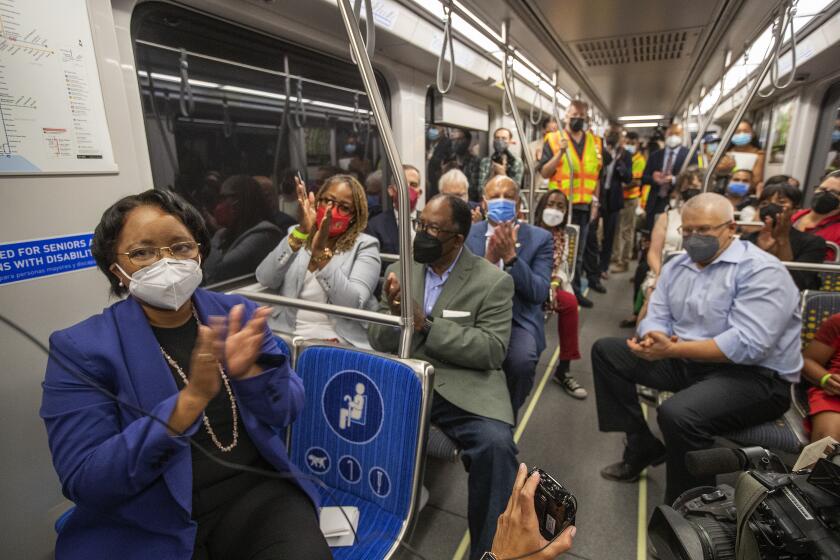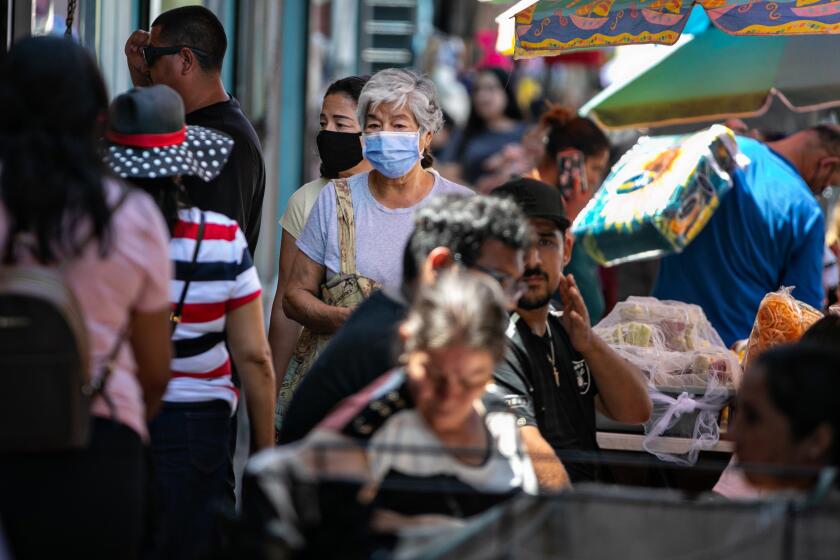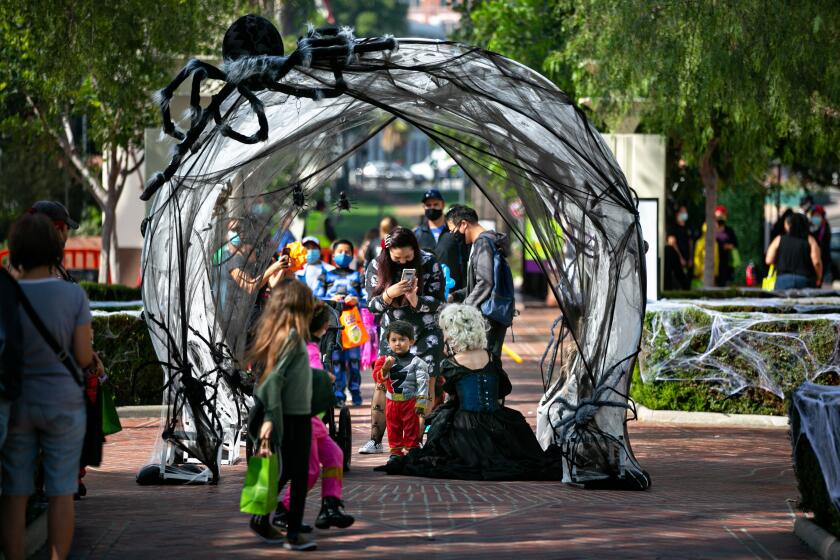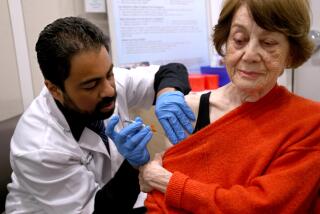Concerns about a California winter COVID wave increase as Europe sees rise in cases
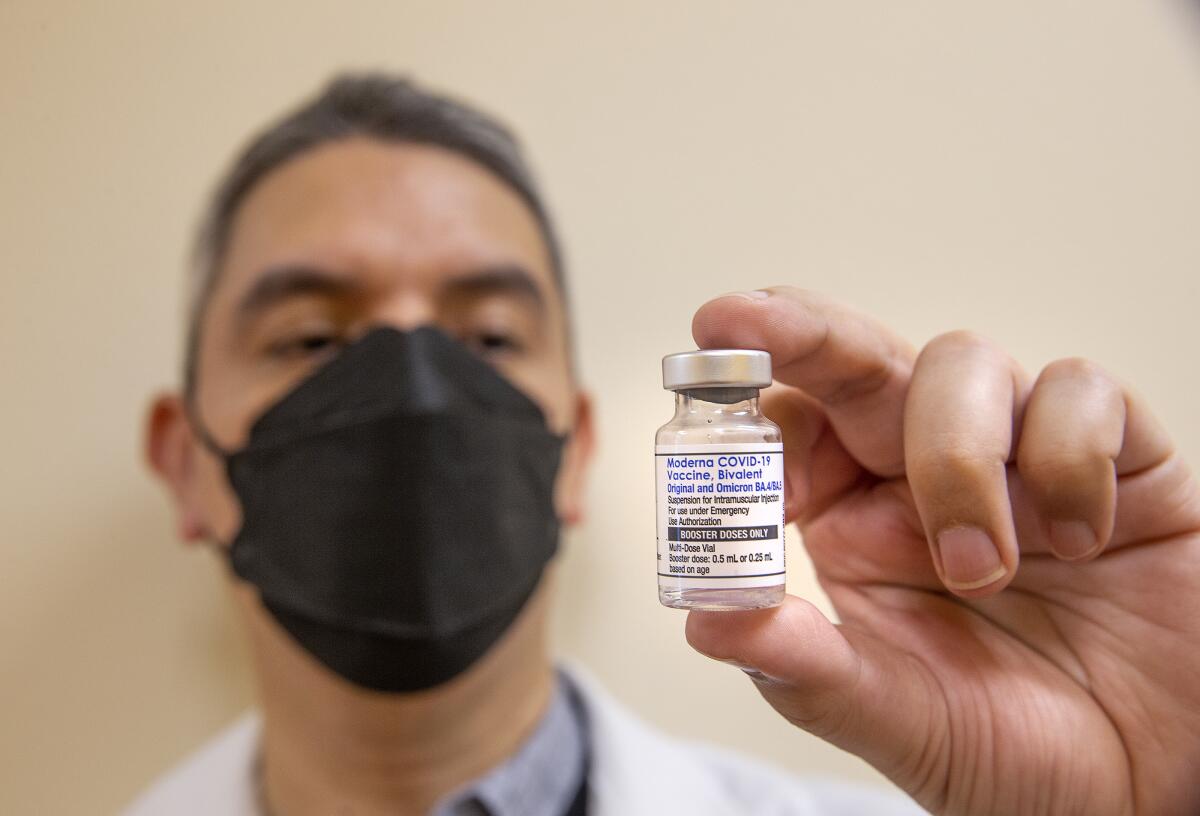
- Share via
While coronavirus cases in California remain fairly under control, a new rise in Europe is fueling fresh concerns about a potential winter wave here.
Britain, France, Germany and Italy have all reported increasing coronavirus cases since mid-September, according to data presented by Los Angeles County Public Health Director Barbara Ferrer.
“Throughout the pandemic, trends and cases in Europe have served as a predictor for trending cases in the United States. This was true at the beginning of the pandemic in March of 2020, and also before each of our subsequent surges. And we should be prepared for it to possibly be true again,” Ferrer said.
Ferrer said there is no need for immediate concern about a number of new Omicron subvariants that health officials are closely tracking nationwide. Still, some experts are predicting the subvariants “have a greater evolutionary advantage than their predecessors, meaning that they’re more contagious; they can crowd out other circulating COVID viruses; and they can break through protection, such as prior infections and vaccinations.”
The U.S. Centers for Disease Control and Prevention on Friday estimated that the share of weekly coronavirus cases due to the dominant BA.5 subvariant has shrunken to 68%, down from a peak of 87% in mid-August. The share attributed to potentially troublesome subvariants is up: BA.4.6 now likely makes up 12% of cases; BQ.1.1, 6%; BF.7, 5%; and BA.2.75.2, 1%.
While cases in the last fall-and-winter wave were far higher than during the first fall-and-winter surge, hospitalizations and deaths were lower. And Ferrer said she hopes that if more people get the updated Omicron-specific bivalent booster shot, any new seasonal wave will be less severe.
California sees COVID retreat now, but new variants bring caution as colder weather nears.
Many people who have been vaccinated and previously boosted are more than six months out from their last dose, making them more vulnerable to infection. Officials hope the new booster shot will reduce the likelihood of infection, as well as hospitalization and death.
For anyone who has been putting off getting their COVID-19 booster or flu shot, hoping to time it closer to the next wave, officials and experts say now’s the time to do it, given that coronavirus transmission can start increasing in November, and for the flu, in December. It takes about two weeks after a COVID-19 booster or flu shot is given for a person to be considered fully protected.
In L.A. County, 81% of residents 12 and older have completed their primary COVID-19 vaccination series. Of residents in that age group who are eligible for a conventional booster shot, 59% have received one. But so far, just 7% of that eligible group has received the updated booster.
The updated booster — designed to protect against not only the original coronavirus strain but also the currently dominant Omicron subvariants, including BA.5 — has been available for those age 12 and up since early September.
People who never got an original booster after completing their primary COVID-19 vaccination series are also eligible for the updated shot.
“If it’s been more than two months since you received your last booster or your primary vaccine series, you are eligible for the new bivalent booster — which is the only vaccine that offers increased protection against Omicron,” Ferrer said. “Having a prior infection is not a guarantee that you will not be reinfected.”
While there’s no shortage of pundits, politicians and other prognosticators clamoring to declare the end of the pandemic, the ultimate call is up to the World Health Organization.
Federal officials on Wednesday cleared the way for updated COVID-19 booster shots to be made available for those ages 5 to 11. L.A. County expects shots for these children will be available as soon as Wednesday.
Early data from vaccine maker Pfizer suggest that the updated shot produces a “substantial increase in the Omicron BA.4/BA.5 neutralizing antibody response above pre-booster levels.” Data reported Thursday by the company suggest the booster “is anticipated to provide better protection against the Omicron BA.4 and BA.5 variants than the original vaccine for younger and older adults.”
Coronavirus case rates continue to fall in Los Angeles County, hitting a level not seen since mid-April. For the seven-day period that ended Thursday, the county was reporting about 950 new cases a day, or 66 new cases a week for every 100,000 residents. That’s down 20% from the prior week. A rate of 100 cases a week for every 100,000 residents is considered high; a rate between 50 and 99 is considered substantial.
However, falling case rates could be a reflection of fewer people getting tested for the coronavirus at facilities like hospitals or testing sites that send results to government agencies. In a possible sign of concern, coronavirus levels detected in L.A. County wastewater are no longer decreasing, Ferrer said, “and likely what we are seeing is that viral transmission is no longer decreasing across the county.”
New coronavirus-positive hospitalizations also are no longer decreasing in L.A. County. As of Thursday, there were 4.9 new weekly coronavirus-positive hospitalizations for every 100,000 residents, a rate that hasn’t dropped substantially over the last three weeks.
It’s not immediately clear why hospitalizations are no longer decreasing, even though the official case rate is still declining. It could be just noise in the data, Ferrer said. But another explanation could be that more people are getting infected than what is being captured in the official data, a reflection of so many people testing at home, where results aren’t reliably reported to health officials.
With the pandemic in a lull and plentiful resources available to help thwart the worst the coronavirus has to offer, there’s hope that fall and winter gatherings could be closer to normal for many Californians.
COVID-19 vaccinations have been credited with saving many lives. A report from the U.S. Department of Health and Human Services released recently suggested that high vaccination and booster rates among seniors likely resulted in roughly 350,000 fewer deaths — and roughly 675,000 fewer hospitalizations — among people who have Medicare.
Still, even though the U.S. is in a COVID-19 lull, there are 300 to 400 Americans dying daily from the illness, according to CDC data. That’s equivalent to 110,000 to 150,000 deaths a year — far higher than the average number of flu deaths per year, which is about 35,000.
Officials are also urging people to get their flu shots, which are recommended for everyone 6 months and older.
“It is reasonable to expect we’re going to have a significant flu season this year, in part because we’ve had very little flu in the last couple of years,” said Dr. Ashish Jha, the White House COVID-19 response coordinator, said at a briefing recently.
The CDC has changed flu shot recommendations this year and is now urging specific turbocharged flu vaccines for seniors, including higher dose and “adjuvanted” shots, which help create a stronger immune response. Studies suggest that for seniors 65 and older, “these vaccines are potentially more effective,” the CDC said.
There are three flu vaccines in these categories: the Fluzone High-Dose Quadrivalent, Fluad Quadrivalent and Flublok Quadrivalent.
Older people are more likely to be hospitalized and die from the flu. “The reason for this is, as we age, our immune systems unfortunately decline. It’s the reason that we see more disease in [the] elderly,” said Dr. Sharon Balter, director of L.A. County’s acute communicable disease control program.
The CDC said seniors should get the upgraded flu vaccines if possible, but if they aren’t available, they should get a standard-dose flu shot instead. Balter said she would hope that seniors would be offered the upgraded flu shot at a vaccine clinic, but said “it’s always a good idea to ask” about it.
Still, UC San Francisco infectious-disease expert Dr. Peter Chin-Hong said seniors don’t need to look too hard for the higher-dose flu shots if they aren’t easily available. “It’s important to get any flu shot, instead of just searching to make sure you get the right one,” Chin-Hong said recently at a campus town hall.
He said the challenging flu season in the Southern Hemisphere, where winter began in June and ended in September, is reason to suspect flu could be worse here this winter.
“Why is flu going to be worse this year? Lower population immunity, more people traveling, restrictions dropped, and the writing on the wall from Australia, where it came earlier. It hit harder, much higher than 2019,” Chin-Hong said.
For those wondering about whether to get the flu shot and the updated COVID-19 booster at the same time, health experts say it’s safe.
More to Read
Sign up for Essential California
The most important California stories and recommendations in your inbox every morning.
You may occasionally receive promotional content from the Los Angeles Times.
